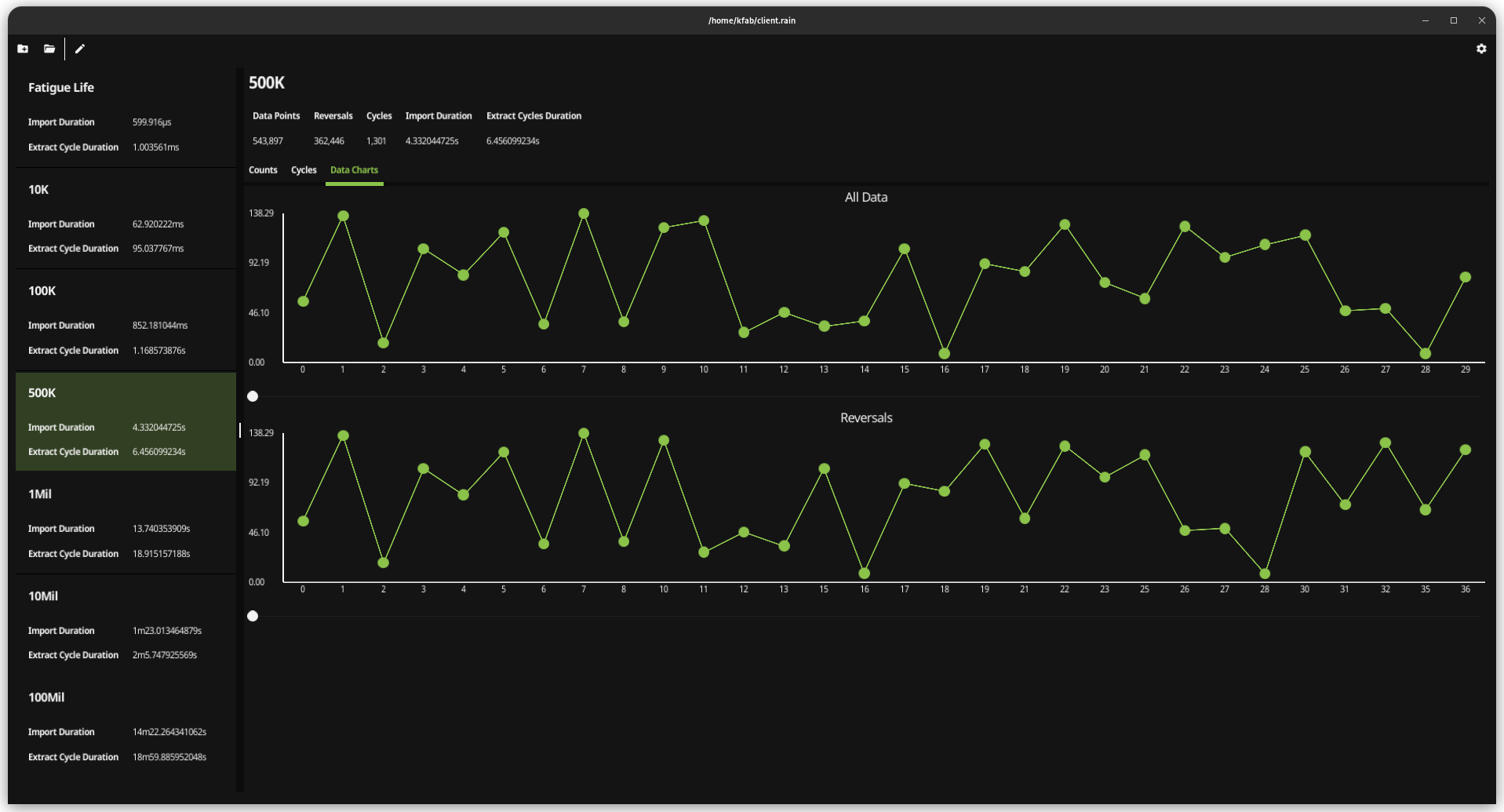Recent posts

5 Questions to answer as a non technical founder starting an app
May. 17, 2023 non-technical ·If you’ve been thinking about an app to develop, and you’re a non-technical founder, it can be a daunting task to figure out how to go from the idea in your head to an app that people can use. There are a lot of risks involved, but getting it right during the planning stages can help mitigate those risks.
It is more than just how the app should work or what it should do. If you’re working with a good developer, they will be more interested in your why for the app, than the tech stack that would be used to build it (In fact a great developer will realize that they are the expert with the tech and will not put you to sleep talking about that stuff).

Choosing the Right Sqlite Indexes to Improve Rainflow Cycle Counting Performance
Apr. 29, 2023 golang · fyne · fatigue-analysis ·I thought that I knew a thing or two about sql indexes. It’s easy right, you just run a couple sql commands to create your index, and you’re off to the races. Turns out that it isn’t quite that easy to get the index you need. You need to know a few things.
- You need to know how sql indexes work (especially for the database you’re using, we’ll be discussing sqlite3)
- You need to know how you’re going to query your data.
Example Data Tables
If you’re brand new to sql and have never heard of indexes, it would make sense that we take a bit of a sidebar and discuss why they are important. Let’s lay a bit of groundwork to get us started on this discussion.
Rainflow Cycle Counting: Efficient memory use for large datasets using Go channels
Apr. 26, 2023 golang · fyne · fatigue-analysis ·Curious how you can get started processing 100 Million data points, using only 150 MiBs of memory, from a native GUI application? Keep reading to figure out how we’ve been working on this problem.
In a previous post, we talked about the design goals that were important to a rainflow cycle counting application that we’re working on. Two of those goals are in somewhat of a conflict, Efficient and Quick, but efficient edged out over quick in the priority scale. We decided being able to run on lower spec hardware instead of a massive datacenter machine with gobs of memory, was more important than being super quick.

Fatigue Analysis Rainflow Cycle Counting
Apr. 15, 2023 golang · fyne · fatigue-analysis ·Rainflow cycle counting · custom software build
At High Creek Software we have been working on a purpose specific tool to extract cycles out of an inline inspection dataset. Our hope is to provide an accurate and fast process for extracting cycle data to be used in fatigue life analysis.
To get started, this is still a work in progress, but we feel that we’ve made good enough progress to start talking about it. Right now, we have a project based UI where you can:
Are Your Social Media Link Shares Working: Use Utm Parameters to Find Out
Apr. 10, 2023If you’re creating and sharing content you should be tracking how well your social media sharing and email marketing efforts are working. Learn to use UTM parameters in conjunction with your analytics tools to find out what is working best.
Using Golang Embed and Build Tags for a Self Contained App
Mar. 6, 2023 golang ·In the recent released go has added some nice developer features. One of my favorites has been embed paired with fs.FS. Using these two together you can build a binary that contains all the required assets as well. This is my go to when developing a web project that needs templates or js/css to be deployed with it.
There is just one problem with this though. During develop time, it isn’t the most convenient to use the compiled in templates or js/css. If you make a change you’d like to not have to rebuild your binary to test those updates. With the use of embed, fs.FS, and build tags you can use either the filesystem assets or an embedded set of assets to make either your development time or deployment time easier and more efficient.

WordPress vs Custom Website Development: How to Decide
Mar. 4, 2023To begin with, we need to address the elephant in the room. We’re a custom software development shop, our bread and butter is using the tools that are lingua franca to the web, which means we fall on the side of custom website development. But that doesn’t mean that WordPress doesn’t have a place, in-fact it is estimated to have 43% of the website market under its belt, you can’t do this without doing something right.
Migrating a Vuejs Project From Webpack to Vite
Feb. 25, 2023The first fail
To start out with, my strengths lie in the backend camp. I do frontend work as that is needed in any project of size, but I prefer backend development. So I’m sure there will be some face palm moments throughout this discussion, largely becasue it is in a realm that I’m not as comfortable with.
Our existing project has a golang backend, and then we have three entry points into our frontend vuejs application (which is in vue 2.x I’d also like to move to vue 3.x). First for the staff to interact with the system, second for the authenticated users to work with, and third a small one for unauthenticated users to get a bit of usage from.

Non-Technical Founders
Jan. 30, 2023 non-technical ·So you want to get started with an app. Where in the world do you even get started?